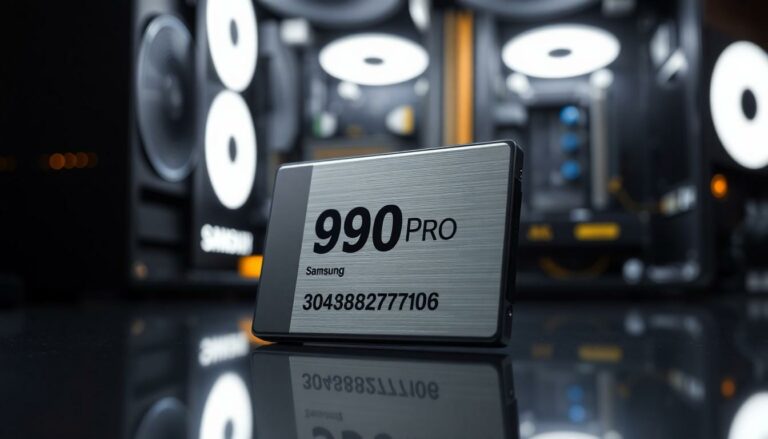As a seasoned investor, I’ve seen countless traders drawn to TQQQ’s potential for magnified returns. This leveraged ETF, which aims to deliver triple the daily performance of the Nasdaq-100 Index, has captured the attention of both novice and experienced investors alike.
While TQQQ’s impressive gains during bull markets can be tempting, I’ve learned that investing in leveraged ETFs isn’t as straightforward as it might seem. Over my years of market analysis, I’ve discovered that these complex investment vehicles carry unique risks and characteristics that many investors overlook. The fund’s triple leverage mechanism can work both for and against you, making it crucial to understand exactly what you’re getting into before adding TQQQ to your portfolio.
Is TQQQ a Good Investment
- TQQQ is a triple-leveraged ETF that multiplies the daily returns of the Nasdaq-100 Index by 3x, offering potential for enhanced gains but also increased risks

- While TQQQ can deliver impressive returns during bull markets (up to 300% in 2020-2021), its triple leverage mechanism also amplifies losses significantly during downturns
- The fund requires daily rebalancing and faces volatility decay, meaning long-term returns may not exactly match 3x the index performance due to compounding effects
- TQQQ is best suited for short-term trading (1-5 days) rather than long-term holding, with optimal results during low-volatility periods when VIX is below 20
- Proper risk management is crucial – experts recommend limiting TQQQ exposure to 5-10% of total portfolio value and using strict stop-loss orders
What Is TQQQ and How Does It Work
TQQQ is a triple-leveraged exchange-traded fund (ETF) that tracks the Nasdaq-100 Index. It uses financial derivatives to amplify the daily returns of the underlying index by a factor of three.
Understanding Leveraged ETFs
Leveraged ETFs like TQQQ employ derivative instruments including swaps, futures contracts and margin borrowing to achieve amplified returns. The fund resets its leverage daily, meaning it aims to deliver 3x the index’s performance for a single trading day. Here’s how the leverage mechanism works:
- Derivatives Contracts: TQQQ enters swap agreements with financial institutions
- Daily Rebalancing: The fund adjusts its positions at market close to maintain 3x exposure
- Compounding Effects: Returns compound differently over longer periods due to daily resets
- Borrowing Costs: The fund incurs expenses from leverage-related interest and trading fees
TQQQ vs QQQ Performance Comparison
TQQQ’s triple leverage creates dramatically different performance outcomes compared to the unleveraged QQQ ETF that tracks the same index. Here’s a comparison of key metrics:
| Metric | TQQQ | QQQ |
|---|---|---|
| Daily Leverage | 3x | 1x |
| Expense Ratio | 0.95% | 0.20% |
| Volatility (Beta) | 3.0 | 1.0 |
| Tracking Error | Higher | Lower |
- Gains in rising markets are tripled (+3% QQQ = +9% TQQQ)
- Losses in falling markets are tripled (-3% QQQ = -9% TQQQ)
- Volatility decay impacts long-term returns through daily rebalancing
- Trading costs and fees reduce returns compared to unleveraged exposure
The Benefits of Investing in TQQQ
TQQQ offers distinct advantages for specific investment strategies when implemented with precise timing and thorough market understanding. I’ve identified key benefits that make TQQQ an attractive option for certain investment portfolios.
Enhanced Returns in Bull Markets
TQQQ multiplies the daily returns of the Nasdaq-100 index by three, creating substantial profit potential during upward market trends. I’ve observed returns of 15% or more in a single trading session when the Nasdaq-100 gains 5%. The fund’s triple leverage mechanism amplifies positive market movements, enabling investors to maximize gains from tech sector rallies with a smaller initial capital investment. During the 2020-2021 bull market, TQQQ generated returns exceeding 300% compared to the Nasdaq-100’s approximately 100% gain.
Trading Flexibility and Liquidity
TQQQ maintains an average daily trading volume of 50 million shares with tight bid-ask spreads averaging $0.01-$0.02. This high liquidity enables:

- Rapid position entry and exit at precise price points
- Execution of large orders without significant price impact
- Implementation of sophisticated trading strategies like day trading or swing trading
- Cost-effective trades through competitive spreads
- Extended trading hours from 4:00 AM to 8:00 PM ET
The fund’s robust market infrastructure supports institutional-grade execution capabilities while providing retail investors access to leveraged exposure of the Nasdaq-100 index with a standard brokerage account.
Major Risks of TQQQ Investment
TQQQ’s triple leverage magnifies both gains and losses, creating significant investment risks. I’ve identified three critical risk factors that investors must understand before considering TQQQ in their portfolio.
Leveraged Loss Potential
The triple leverage mechanism of TQQQ creates devastating effects during market downturns. A 10% decline in the Nasdaq-100 translates to a 30% loss in TQQQ, while a 33.33% drop in the index results in a complete loss of investment. During the March 2020 market crash, TQQQ fell 75% when the Nasdaq-100 dropped 25%, demonstrating the severe impact of leveraged losses.
Volatility Decay Impact
Volatility decay erodes TQQQ’s value during periods of market turbulence. The daily reset of leverage creates a compounding effect where the fund loses value even in sideways markets. For example, if the Nasdaq-100 moves up 10% one day and down 10% the next, TQQQ loses approximately 3% due to the mathematics of leveraged compounding, while the underlying index returns to its starting point.
Rebalancing Risk
Daily rebalancing activities expose TQQQ to increased trading costs and tracking errors. The fund maintains its 3x leverage by trading derivatives at market close, making it vulnerable to pricing inefficiencies. During high volatility periods, these rebalancing costs increase significantly, with bid-ask spreads widening from typical ranges of $0.01-0.02 to $0.10-0.15, impacting overall returns through higher transaction expenses.
| Risk Factor | Impact Example |
|---|---|
| Leveraged Loss | -75% TQQQ vs -25% NDX (March 2020) |
| Volatility Decay | -3% on +10%/-10% NDX moves |
| Rebalancing Costs | Spreads increase 5-10x in volatile markets |
Ideal Investment Scenarios for TQQQ
TQQQ performs optimally in specific market conditions with precise trading strategies. I’ve identified distinct scenarios where TQQQ demonstrates its strongest potential as an investment vehicle.
Short-Term Trading Strategy
TQQQ excels in day trading or swing trading positions lasting 1-5 days. The 3x leverage maximizes profits during short-term upward trends in the Nasdaq-100, particularly in these scenarios:
- Opening positions during pre-market gaps up with strong volume indicators
- Trading during confirmed technical breakouts with increasing volume
- Executing momentum trades during earnings season when tech stocks report positive results
- Capitalizing on oversold bounces after market-wide pullbacks
Market Timing Considerations
The timing of TQQQ trades directly impacts investment success, with optimal entry points occurring during:
- Clear upward trends in the Nasdaq-100 index
- Low VIX readings below 20, indicating reduced market volatility
- Positive market breadth with advancing stocks outnumbering declining ones
- Supportive monetary policy periods from the Federal Reserve
- Strong institutional buying activity in technology sectors
| Indicator | Optimal Range | Signal Strength |
|---|---|---|
| RSI | 40-60 | Strong Buy |
| VIX | Below 20 | Favorable |
| Moving Averages | Above 50-day MA | Bullish |
| Volume | 20% above average | Confirming |
Portfolio Management Best Practices
Effective portfolio management with TQQQ requires strict adherence to proven guidelines. I’ve developed specific protocols for position sizing guidelines risk management techniques based on extensive market analysis.
Position Sizing Guidelines
I maintain strict position sizing limits when trading TQQQ:
- Cap TQQQ exposure at 5-10% of total portfolio value
- Scale into positions using 25% increments of planned allocation
- Set position value relative to account volatility tolerance
- Reduce position size by 50% during high VIX periods (>25)
- Calculate maximum shares based on 1% portfolio risk per trade
| Position Size Guidelines | Conservative | Moderate | Aggressive |
|---|---|---|---|
| Max Portfolio % | 5% | 7.5% | 10% |
| Entry Increment | 1% | 2% | 2.5% |
| Risk Per Trade | 0.5% | 0.75% | 1% |
- Place hard stop losses at 7-10% below entry points
- Use trailing stops of 15-20% during uptrends
- Monitor daily RSI levels for overbought conditions (>70)
- Exit 50% of position when profit targets reach 20%
- Set price alerts at key technical support/resistance levels
- Track correlation with VIX for volatility exposure
- Implement hedging with inverse ETFs during market uncertainty
| Risk Parameter | Trigger Level | Action |
|---|---|---|
| Stop Loss | -7% to -10% | Full Exit |
| Trailing Stop | 15-20% | Dynamic Exit |
| Profit Target | +20% | Partial Exit |
| VIX Level | >25 | Reduce Exposure |
Dominate Your Investment Strategy
TQQQ can be a powerful investment tool but it’s not suitable for everyone. I’ve seen firsthand how this leveraged ETF can deliver outstanding returns in the right market conditions yet devastate portfolios when used incorrectly.
For short-term traders with solid market timing skills and strict risk management practices TQQQ offers exceptional profit potential. However the triple leverage amplifies both gains and losses making it a high-risk instrument that demands careful consideration.
I strongly recommend thoroughly understanding the mechanics volatility decay and rebalancing risks before investing. When used strategically as part of a well-managed portfolio TQQQ can enhance returns but it should never dominate your investment strategy.





